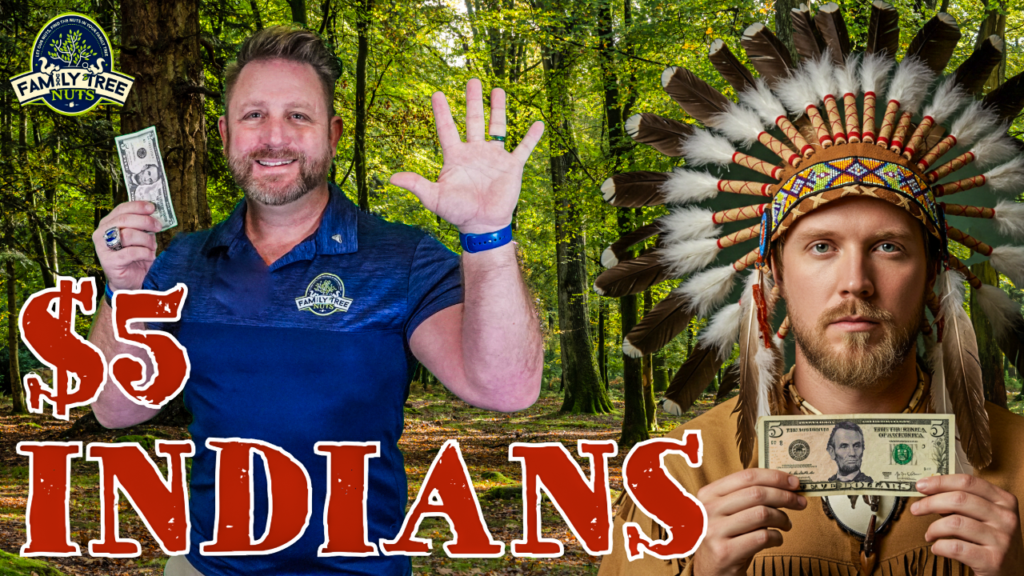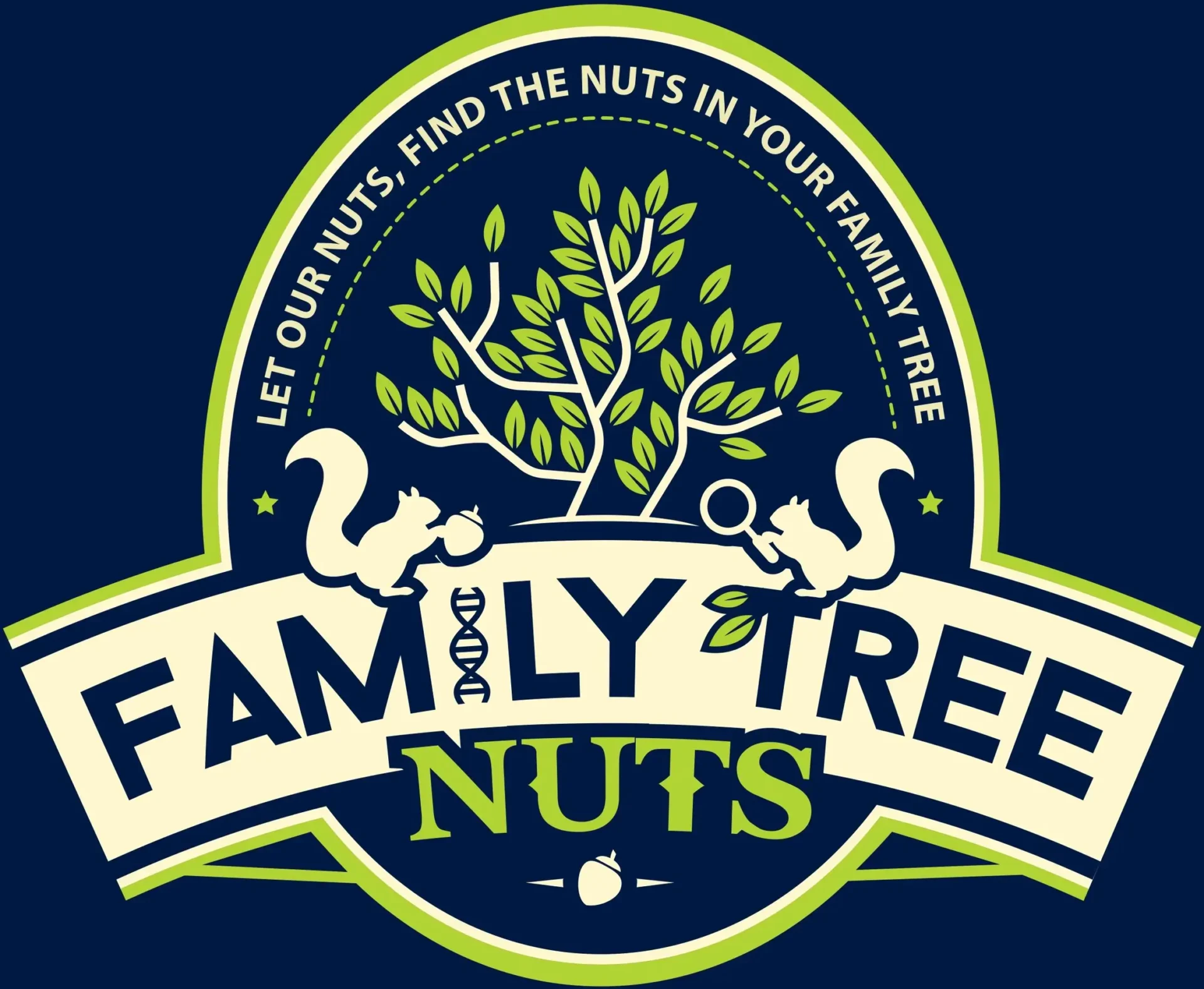$5 INIDANS

Ever come across the term “$5 Indians”? It’s one of those quirky historical tidbits that almost sounds made up. Imagine this: late 19th-century America, where for just five bucks—roughly $150 today—someone could reportedly get themselves listed as a Native American. This isn’t a feel-good story of cultural blending, though. It’s about greed, ambition, loopholes, and the tangled mess of identity and bureaucracy. These illegal land grabs have had an impact on people today and the term has become a jab at people who are part of the “Wannabe Tribe” and the “Pretendians”. Today, we’re digging into what “$5 Indians” means, how it started, and why it still lingers in history. Let’s travel back to the 1890s and explore this strange chapter.
Hey everybody this is Colonel Carson with Family Tree Nuts, and I’m a professional genealogist and a historian. In our videos entitled, “No! You’re NOT Cherokee!” and “NO! You’re Still NOT Cherokee”, we have had thousands make comments about $5 Indians, but I discovered most folks had never heard the term. That’s when I knew that it was time to make this video. At Family Tree Nuts, we build family trees for clients that either don’t know how, don’t have the time, or don’t want to pay those expensive membership fees. We’d love to honor your ancestors for you. We also make history videos all over the United States, and a few countries, so if you like videos like these, be sure to subscribe to our YouTube channel. Now back to the story.
To get the full picture, we need some context. By the late 1800s, the U.S. government was focused on managing Native American lands and resources, often through policies like the Dawes Act of 1887. The plan was to divide tribal lands into individual allotments for Native Americans, with any “extra” land made available for settlement. To decide who qualified, they created the Dawes Rolls—official lists of tribal members. It sounds organized, but things quickly got complicated. Those allotments weren’t just patches of ground; they held value—timber, grazing fields, even oil in some regions. And where there’s value, people find ways to get in on it.
The term “$5 Indians” comes from a scheme where some individuals—often settlers with no tribal ties—paid small bribes, typically around five dollars, to get onto those rolls. Their goal? To claim land allotments. It was fraud, no doubt, and it happened more than you’d hope.
It’s not all ancient history, either. The term “$5 Indian” still pops up today, sometimes as a jab at people claiming Native ancestry without proof. You’ve probably seen it, the old, “Oh, my great-grandma was a full-blooded Cherokee princess” line, but they have no evidence. Most of those that say this have roots in Appalachia, but for a tiny fraction of those making this claim, the story traces back to these frauds.
So how did this work? Imagine you’re a settler in, say, Oklahoma, where a lot of this played out. You hear the Cherokee or Choctaw nations are getting their rolls finalized. You’ve got no tribal ancestry, but you’ve got five dollars and a friend who knows a shady enrollment official. You slip that cash under the table, maybe claim a distant Native grandma no one can verify, and bam—you’re on the list. Suddenly, you’re allotted 160 acres that should’ve gone to an actual tribal member. Some estimates say a few hundred to around a thousand people pulled this off, especially in the Five Civilized Tribes—Cherokee, Chickasaw, Choctaw, Creek, and Seminole.
The corruption wasn’t subtle. Court records from the era show officials caught taking bribes, forged documents, even fake testimonies. One guy, a lawyer and eventual U.S. Senator named Napoleon Bonaparte Moore, got busted for enrolling over 200 fake “Indians”—all for profit. The going rate? You guessed it—about five bucks a head. It’s almost comical until you realize the cost: real Native families lost land, heritage, and wealth to these schemes.
And here’s the kicker: the Dawes Rolls weren’t just about land. They became the official record of tribal identity. Even today, some tribes use them to determine membership. So those $5 Indians didn’t just steal property, they muddied the waters of who’s really part of a tribe.
The ripple effects were huge. By the time the Dawes Rolls closed in 1907, over two-thirds of tribal land, about 90 million acres, had been transferred out of Native hands. The $5 Indians were just one piece of that puzzle, but they highlight how greed and systemic flaws screwed over entire communities. Families whose ancestors survived forced relocation, like the Trail of Tears, now watched their land shrink again, this time to con artists with a few coins.
The term $5 Indian is now often used for anyone thinking they are Native, even if their family stories don’t trace back to this illegal landgrab. It’s a catch all phase for all those that are part of the “Wannabe Tribe” and the “Pretendians”.
And for tribes, it’s a sore spot. Enrollment is sacred—it’s about culture and belonging, not just paperwork. When outsiders gamed the system, it didn’t just take land; it messed with identity.
There’s a flip side, too. Some descendants of $5 Indians argue they’re legit—maybe great-grandpa did have a tiny bit of Native blood. But without solid records, it’s a tough sell, and tribes get to decide, not the government or some online DNA test.
So what’s the lesson here? The $5 Indians story is a peculiar glimpse into a larger tale: how America’s land policies reshaped lives and legacies in unexpected ways. It’s a reminder that history can be messy, unfair, and downright bizarre. Next time you hear someone toss around that phrase, you’ll know it’s more than a quirky saying—it’s a symbol of a hustle that changed the map.
So now we know about the $5 Indians. What do you think? Have you ever heard this term before? What are your thoughts about the history of it all? Do you have any personal stories of the impact of the matter? We’d love to hear what you have to say in the comments below. Make sure that you subscribe, as we are proud to share this information with all of you, and be sure to see the video at the link below. And remember, Family Tree Nuts, let out nuts find the nuts in your family tree.
-Colonel Russ Carson, Jr., Founder, Family Tree Nuts
